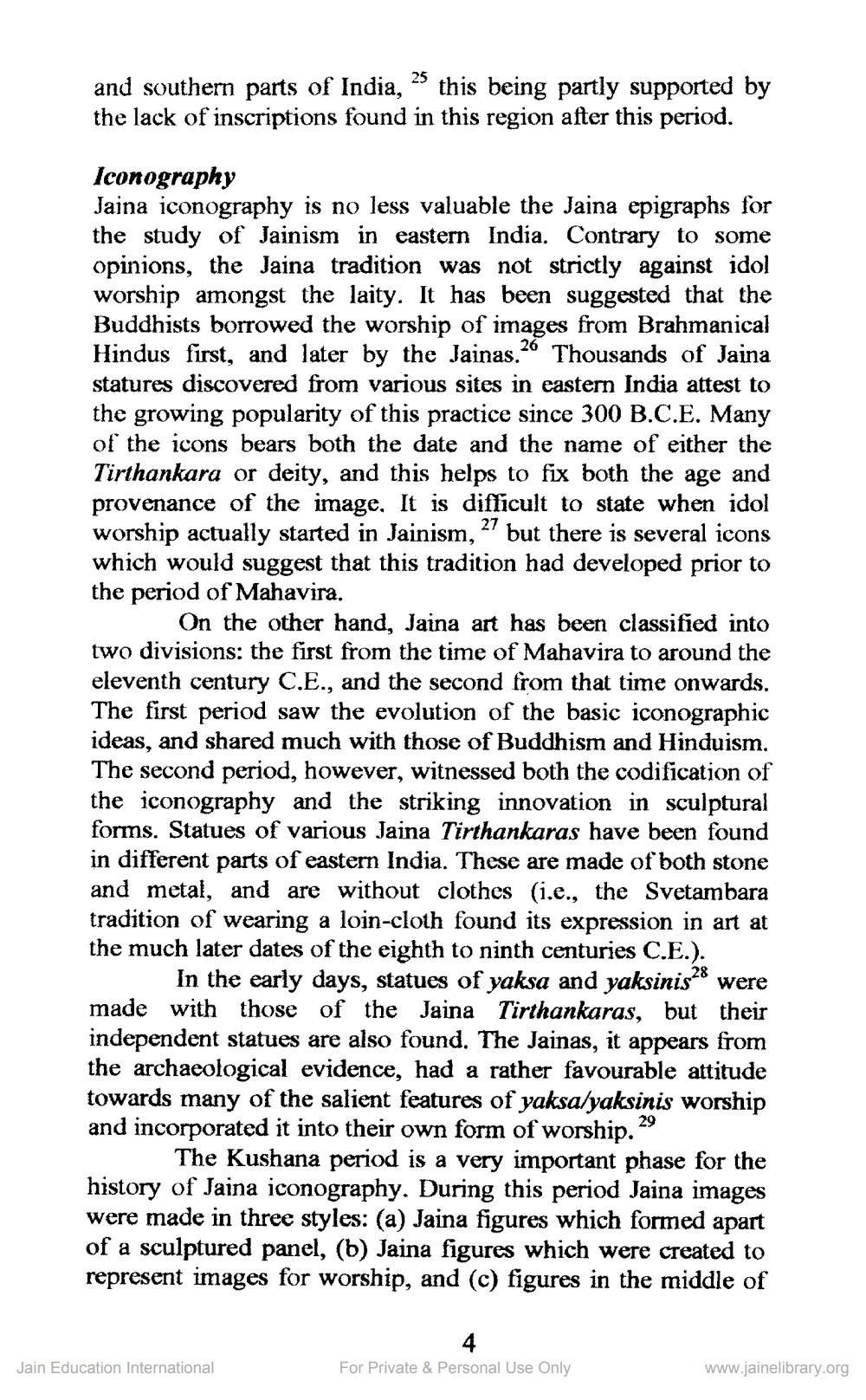Book Title: Jinamanjari 2001 09 No 24 Author(s): Jinamanjari Publisher: Canada Bramhi Jain Society Publication View full book textPage 8
________________ and southern parts of India, - this being partly supported by the lack of inscriptions found in this region after this period. Iconography Jaina iconography is no less valuable the Jaina epigraphs for the study of Jainism in eastern India. Contrary to some opinions, the Jaina tradition was not strictly against idol worship amongst the laity. It has been suggested that the Buddhists borrowed the worship of images from Brahmanical Hindus first, and later by the Jainas.26 Thousands of Jaina statures discovered from various sites in eastern India attest to the growing popularity of this practice since 300 B.C.E. Many of the icons bears both the date and the name of either the Tirthankara or deity, and this helps to fix both the age and provenance of the image. It is difficult to state when idol worship actually started in Jainism, but there is several icons which would suggest that this tradition had developed prior to the period of Mahavira. On the other hand, Jaina art has been classified into two divisions: the first from the time of Mahavira to around the eleventh century C.E., and the second from that time onwards. The first period saw the evolution of the basic iconographic ideas, and shared much with those of Buddhism and Hinduism. The second period, however, witnessed both the codification of the iconography and the striking innovation in sculptural forms. Statues of various Jaina Tirthankaras have been found in different parts of eastern India. These are made of both stone and metal, and are without clothes (i.e., the Svetambara tradition of wearing a loin-cloth found its expression in art at the much later dates of the eighth to ninth centuries C.E.). In the early days, statues of yaksa and yaksinis s were made with those of the Jaina Tirthankaras, but their independent statues are also found. The Jainas, it appears from the archaeological evidence, had a rather favourable attitude towards many of the salient features of yaksa/yaksinis worship and incorporated it into their own form of worship.29 The Kushana period is a very important phase for the history of Jaina iconography. During this period Jaina images were made in three styles: (a) Jaina figures which formed apart of a sculptured panel, (6) Jaina figures which were created to represent images for worship, and (c) figures in the middle of 4 Jain Education International For Private & Personal Use Only www.jainelibrary.orgPage Navigation
1 ... 6 7 8 9 10 11 12 13 14 15 16 17 18 19 20 21 22 23 24 25 26 27 28 29 30 31 32 33 34 35 36 37 38 39 40 41 42 43 44 45 46 47 48 49 50 51 52 53 54 55 56 57 58 59 60 61 62 63 64 65 66 67 68 69 70 71 72 73 74 75 76 77 78 79 80
